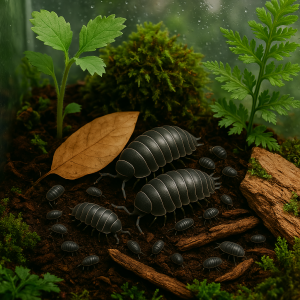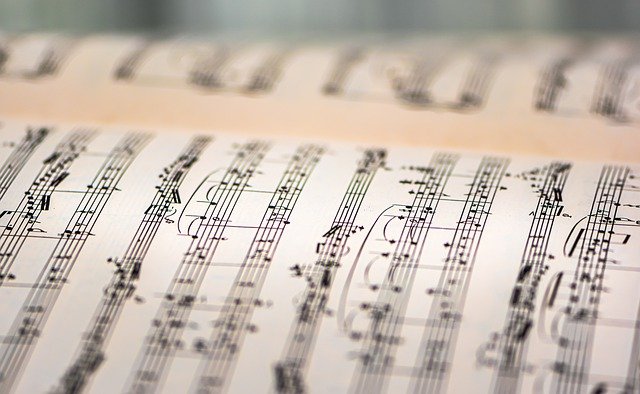 In a quiet corner of a basement studio, composer Elliot Mars adjusts a microphone near a terrarium. Inside, a cluster of isopods—pill bugs—scuttle under leaves and roll into tight, armored balls. To most people, it’s just bug behavior. To Mars, it’s music.
In a quiet corner of a basement studio, composer Elliot Mars adjusts a microphone near a terrarium. Inside, a cluster of isopods—pill bugs—scuttle under leaves and roll into tight, armored balls. To most people, it’s just bug behavior. To Mars, it’s music.
“I noticed how they moved—jerky, deliberate, sometimes in sync, sometimes totally random,” he says. “It reminded me of modular synth patterns. That got me thinking—what would it sound like if I wrote music the way they move?”
That question has sparked a surprising micro-genre of experimental music, where composers draw inspiration from the tiny, often overlooked movements and habits of isopods. These crustaceans, isopods UK —distant relatives of shrimp—have become unlikely muses for musicians interested in rhythm, repetition, and biological structure.
Watching Bugs to Hear Patterns
For many, the process starts with observation. Ambient musician Lia Chen spent weeks filming her colony of Armadillidium vulgare, one of the most common isopod species. “At first, it was just a fascination. They’re so mechanical but also unpredictable,” she explains. “I slowed down the footage, mapped their movements, and started layering sound over it—clicks, pulses, metallic tones.”
Chen’s 2024 album Substrate uses those motion maps as rhythmic guides. Each track reflects a different behavior: foraging, burrowing, clustering under humidity. It’s not a literal translation but a loose conversation between action and sound. “There’s a calming, almost meditative quality to how they operate,” she says. “I tried to build that into the tone and pacing.”
Textures from the Soil
Isopods thrive in damp, decomposing environments. That earthy setting has influenced not just rhythm but timbre. Composer and field recordist Jonas Peers uses contact mics and hydrophones to capture the soundscape of isopod habitats—leaf litter crunching, soil shifting, and the faint hum of moisture. Those textures become part of his compositions, layered with analog synths and processed strings. “There’s this whole hidden world under our feet,” Peers says. “Isopods are part of that slow, constant churning. The music reflects that: it’s not flashy or fast. It unfolds gradually, like compost.” In his track “Molting,” Peers even mimics the isopod’s molting process—a two-stage shedding that begins with the back half and finishes with the front—by splitting the track into two overlapping rhythmic halves. “It creates this weird, off-kilter groove that slowly resolves,” he says.
More Than a Gimmick
At first glance, composing music inspired by bugs might sound like a novelty. But for these artists, it’s a way of reconnecting with natural rhythms in a highly digital age. “There’s so much noise in the world,” Chen says. “Watching isopods—creatures that have been doing the same things for millions of years—puts things in perspective. They’re not in a hurry. They’re not performing. They’re just doing their thing.” And that non-performative aspect appeals to musicians weary of trends and algorithms. Isopods don’t care about song structures or hooks. They repeat actions, adapt slightly, and exist in cycles. That, Mars says, is the essence of composition.
“I think we underestimate the musicality of simple systems,” he says. “You watch a group of isopods and start to see a logic—patterns that repeat with variation, clusters that expand and collapse. It’s not that different from a fugue or a drone piece.”
From Nature to Notation
Translating isopod behavior into notation is a challenge. Some composers use graphic scores—visual maps rather than traditional sheet music—to reflect movement and density. Others write code to generate sequences based on observed behavior.
Mars uses a custom MIDI controller shaped like a terrarium, where each quadrant triggers a sound based on behaviour: hiding, crawling, clustering, or stillness. “It’s like jamming with bugs,” he laughs. “They don’t always keep time, but that’s part of the fun.”
The results are often ambient, glitchy, or drone-based—genres that naturally embrace irregularity. However, as the interest in eco-acoustic music grows, some of these ideas are finding their way into more conventional settings. “I’d love to see an orchestra piece where the score is based on isopod swarm patterns,” Chen says. “You could have string sections moving in and out like a shifting colony. It wouldn’t just sound cool but make people think differently about life in the dirt.”
Ultimately, composing for crawlers isn’t about the bugs themselves. It’s about slowing down, paying attention, and letting the natural world shape our creative impulses. “Isopods aren’t glamorous,” Peers says. “They’re not butterflies or birds. But they’re part of the system, doing essential work. That quiet presence—steady, rhythmic, unnoticed—is exactly what I wanted in my music.” In a time when everything screams for attention, it’s oddly comforting to write a song that crawls.

